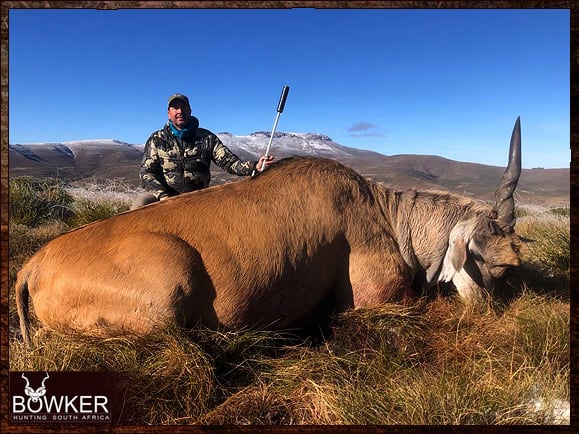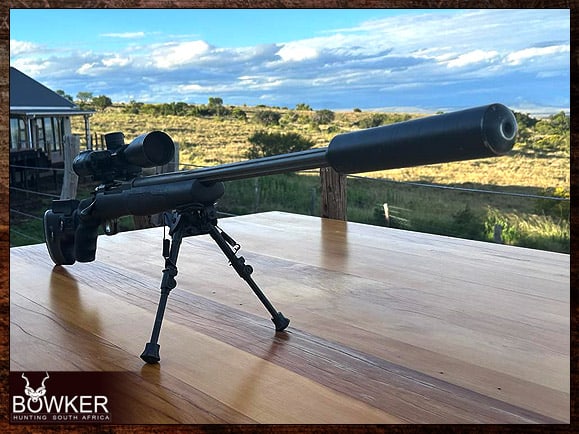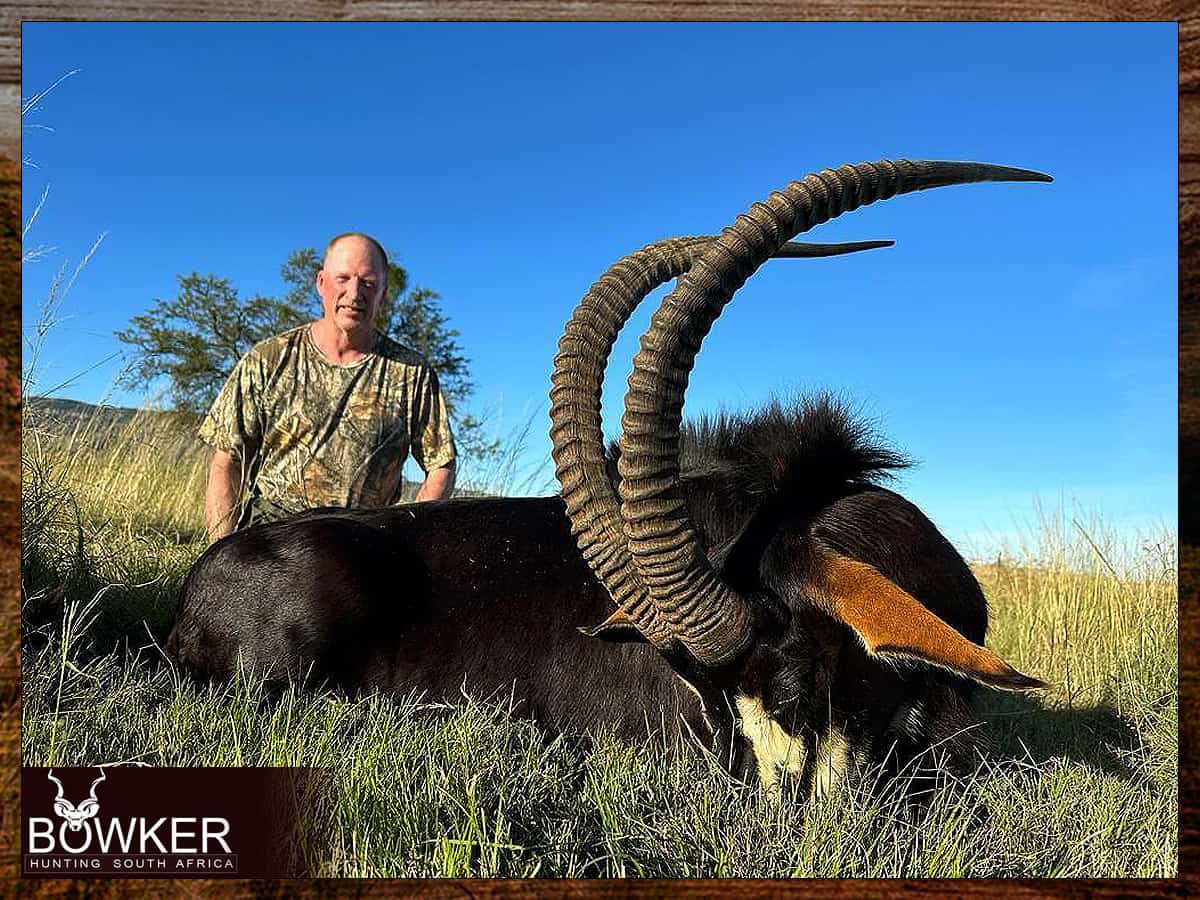Table of Contents
What is a hunting suppressor?
A hunting suppressor, also known as a hunting silencer or moderator, is a device designed to reduce the noise generated by the discharge of a firearm. It is commonly used by hunters to minimize the loud sound produced when a bullet is fired. The primary purpose of a hunting suppressor is to decrease the noise signature of the gunshot, making it less disruptive in hunting environments.
Suppressors work by trapping and slowing down the escaping gases produced during the firing of a bullet. This reduces the velocity of the gases and lowers the intensity of the sound. While a suppressor significantly reduces the noise, it doesn’t eliminate it entirely. Additionally, suppressors can also have other benefits, such as reducing recoil and muzzle rise, improving accuracy, and providing a more enjoyable shooting experience.
It’s important to note that the legality of hunting suppressors varies by country and region. In some places, they are tightly regulated or prohibited, while in others, they may be legal for certain types of firearms and activities. Hunters should always be aware of and comply with local laws and regulations regarding the use of suppressors.

What is the difference between a suppressor and a muzzle break?
A suppressor (or silencer) and a muzzle brake are both firearm accessories, but they serve different purposes and have distinct functions.
- Suppressor (Silencer):
- Purpose: The primary purpose of a suppressor is to reduce the noise generated by the discharge of a firearm.
- Function: Suppressors work by trapping and slowing down the escaping gases produced when a bullet is fired. This helps to decrease the intensity of the sound produced.
- Additional Benefits: In addition to noise reduction, suppressors can also reduce recoil, muzzle rise, and the visual signature of the gunshot.
- Muzzle Brake:
- Purpose: The primary purpose of a muzzle brake is to reduce recoil and muzzle rise.
- Function: Muzzle brakes are designed to redirect gases produced during the firing of a round to counteract the recoil and upward movement of the firearm. This can make it easier for the shooter to stay on target during rapid or repeated firing.
- Noise Impact: Muzzle brakes do not reduce the noise of a gunshot. In fact, they may increase the perceived noise to the shooter and those in close proximity because the redirected gases can create a louder blast.
In summary, a suppressor is primarily designed to reduce the noise signature of a gunshot, while a muzzle brake is designed to mitigate recoil and muzzle rise.
It’s also worth noting that some devices, called muzzle devices or hybrid devices, combine features of both suppressors and muzzle brakes, providing some noise reduction along with recoil control. Users should be aware of legal restrictions on these accessories, as regulations can vary by jurisdiction.
Are silencers legal in South Africa?
Hunting suppressors are legal in South Africa and can be purchased over the counter. We use a suppressor on all our rifles. We also buy suppressors for our clients to use while hunting in South Africa. They are relatively inexpensive. We do need advance notice and your exact thread pitch.
If you are using our rifles they are fitted with state of the art combination suppressors and muzzle brakes for your safari. Use our rifles and use the extra money to invest in quality binoculars.

Here are the advantages of using a suppressor while hunting:
- Reduced Noise:
- The primary benefit of using a suppressor is a significant reduction in the noise produced by the gunshot. This is particularly advantageous in hunting situations where minimizing noise can be crucial for not disturbing wildlife or alerting nearby hunters.
- Hearing Protection:
- Hunters are exposed to loud gunshots, which can contribute to hearing damage over time. Suppressors can help mitigate this risk by reducing the intensity of the noise, providing a form of hearing protection for the shooter.
- Improved Shot Placement:
- With reduced recoil and muzzle rise, shooters may find it easier to maintain target acquisition and accuracy, leading to improved shot placement. This is especially valuable in situations where follow-up shots may be necessary.
- Reduced Recoil:
- Suppressors can decrease felt recoil, making shooting more comfortable for the hunter. This is beneficial for hunters, especially those using high-caliber rifles, as it helps to mitigate the physical impact on the shooter.
- Minimized Disturbance:
- The quieter discharge of a suppressed firearm is less likely to disturb wildlife in the vicinity. This can be advantageous in hunting scenarios where stealth and minimizing disruption to the natural environment are important.
- Enhanced Communication:
- In a group hunting setting, the use of suppressors allows for better communication between hunters. The reduced noise allows hunters to communicate without being hindered by loud gunshots.
- Reduced Muzzle Flash:
- Suppressors can also help reduce muzzle flash, which can be particularly useful in low-light conditions. This can contribute to maintaining better visibility of the target and surroundings.
Disadvantages of Suppressors for hunters
- Regulatory Restrictions:
- Suppressors are subject to strict regulations in many regions. In some places, ownership and use may be heavily restricted or prohibited. Users should be familiar with and comply with local suppressor laws and regulations. South Africa has no regulations associated with suppressors.
- Added Weight and Length:
- Suppressors add weight and length to the firearm. This can impact the overall balance of the gun and may be a consideration for those who prioritize a lightweight and compact setup, especially in dynamic hunting or shooting situations.
- Cost:
- Suppressors can be expensive, and the cost may include the suppressor itself and any additional fees associated with licensing and compliance with regulations. In the context of a hunt safari to Africa though the cost is small.
- Maintenance:
- Suppressors require regular maintenance to ensure optimal performance. Fouling can accumulate inside the suppressor over time, affecting its effectiveness. Proper cleaning and maintenance are essential to keep the suppressor in good working condition.
- Aesthetics:
- Some users may find that the addition of a suppressor changes the appearance of the firearm. This is a subjective consideration, but for those who value the original aesthetics of their firearm, it could be a factor to consider.
- Potential Accuracy Impact:
- While many modern suppressors are designed not to negatively impact accuracy, some users may find that their specific firearm and ammunition combination are affected. It’s essential to test the setup to ensure there is no significant impact on accuracy.
Traveling with s Silencer in the USA on route to South Africa
While suppressors (silencers) are legal for civilian ownership in many states in the USA, there are additional considerations when it comes to flying with a suppressor. Transporting a suppressor across state lines or on an airplane involves adherence to federal regulations, specifically those outlined by the Bureau of Alcohol, Tobacco, Firearms, and Explosives (ATF) and the Transportation Security Administration (TSA).
Here are some key points to consider:
- National Firearms Act (NFA) Compliance:
- Suppressors are regulated under the National Firearms Act (NFA). To legally transport a suppressor, it must be registered in compliance with NFA regulations.
- Transportation Security Administration (TSA) Rules:
- The TSA has specific rules for transporting firearms and firearm accessories, including suppressors, on commercial flights. Firearms and firearm parts must be transported in checked baggage and declared to the airline during check-in.
- Locked Container Requirement:
- Firearms, including suppressors, must be transported in a locked hard-sided container. Ammunition is typically not allowed in the same container.
- Check with the Airline:
- It’s essential to check with the specific airline for any additional requirements or restrictions they may have regarding the transport of firearms and suppressors.
- State-Specific Laws:
- Even if suppressors are legal in your state, you must also be aware of the laws in the state(s) to which you are traveling. Some states may have additional regulations or restrictions.
- Local Laws at the Destination:
- Be aware of and comply with local laws at your destination. Just because you can legally possess a suppressor in your home state doesn’t necessarily mean the same rules apply everywhere.
- Approval and Paperwork:
- It’s advisable to have all relevant paperwork, including ATF approval documents and any necessary permits, with you when traveling with a suppressor.
Remember that regulations can change, and checking for any updates or changes in federal and state laws is crucial before traveling with a suppressor. Always follow the specific procedures outlined by the ATF, TSA, and the airline you use to ensure legal and secure transportation.
How does the point of aim change with a suppressor, and what do you need to do?
The point of impact (POI) can shift when using a suppressor on a firearm, and this phenomenon is often referred to as “POI shift.” Several factors can contribute to this shift, and it’s important for shooters to be aware of it when using a suppressor. Here are some common reasons for POI shift and what you can do to address it:
- Weight and Length Changes:
- Adding a suppressor to the muzzle of a firearm changes its weight and length. This alteration can affect the balance of the firearm, potentially leading to a shift in the point of impact.
- Barrel Harmonics:
- The addition of a suppressor can influence the barrel harmonics, which refers to the vibrations and movements of the barrel during and after firing. Changes in barrel harmonics can result in a shift in POI.
- Attachment and Alignment:
- The way the suppressor is attached to the firearm and how well it aligns with the barrel can impact the POI. Any misalignment or improper attachment can cause inconsistencies in shot placement.
- Ammunition Variability:
- Different types of ammunition may respond differently when used with a suppressor. Changes in bullet weight, velocity, or powder load can contribute to POI shift.
To address POI shift when using a suppressor, consider the following:
- Zero the Firearm with the Suppressor:
- If you plan to use a suppressor regularly, zero the firearm with the suppressor attached. This involves adjusting the sights or optic while the suppressor is on the firearm. This way, the sights are calibrated to the specific conditions of shooting with the suppressor.
- Consistent Attachment:
- Ensure that the suppressor is consistently and securely attached to the firearm. Any movement or misalignment can contribute to POI shift.
- Ammunition Consistency:
- Stick to a consistent type and brand of ammunition when using a suppressor. This can help minimize variability in bullet performance and reduce the likelihood of POI shift.
- Record and Monitor Shifts:
- Keep records of your shots and monitor for any consistent POI shifts. This information can help you make adjustments as needed and understand how the suppressor affects your specific setup.
- Adjust Sights or Optics:
- If you experience POI shift, you may need to make adjustments to your sights or optic to compensate for the changes introduced by the suppressor.
It’s important to note that the extent of POI shift can vary depending on factors such as the type of firearm, suppressor, ammunition, and shooting conditions. Regular practice and monitoring of your firearm’s performance with a suppressor will help you understand and manage any POI shifts effectively.
What is the length of a suppressor, and does the existing barrel length matter?
The length of a suppressor can vary significantly depending on the design, intended use, and the type of firearm it is meant for. Suppressors come in various lengths to accommodate different needs and preferences, ranging from short and compact designs to longer models.
The overall length of a suppressor is typically measured from the front to the rear of the device. The actual length can be influenced by factors such as the number of baffles, the type of construction, and the materials used.
As for the existing barrel length, it can indeed matter when choosing a suppressor. The length of the barrel affects the overall length of the firearm when the suppressor is attached. Some considerations related to barrel length and suppressors include:
- Legal Requirements:
- In some jurisdictions, there may be regulations specifying the minimum barrel length for certain firearms. When adding a suppressor, you need to ensure that the resulting overall length is compliant with local laws.
- Balancing and Maneuverability:
- The combination of the barrel length and suppressor can impact the overall balance and manoeuvrability of the firearm. This is particularly important in situations where quick and precise handling is necessary.
- Suppressor Compatibility:
- Some suppressors are designed for use with specific barrel lengths or caliber ranges. It’s important to choose a suppressor that is compatible with the firearm and barrel length you intend to use.
- Velocity and Performance:
- The length of the barrel can affect the velocity of the projectile. When using a suppressor, it’s important to consider how changes in barrel length may impact the overall performance of the firearm.
- Sound Reduction:
- The interaction between the suppressor and the barrel can influence the effectiveness of sound reduction. The combination of barrel length and suppressor design can affect the level of noise reduction achieved.
Before purchasing a suppressor, it’s advisable to consult the manufacturer’s specifications and recommendations. Additionally, if you have specific legal requirements or preferences related to barrel length and overall firearm length, those should be taken into account when selecting a suppressor.
What is a muzzle thread pitch on your hunting rifle?
The muzzle thread pitch refers to the measurement of the threads on the muzzle of a rifle barrel. It is specified as the distance between adjacent threads and is usually given in inches or millimeters.
For example, a common thread pitch might be 5/8 x 24, where 5/8 represents the diameter of the threads, and 24 indicates the number of threads per inch.
Most suppressors are threaded 5/8 x 24 which is the standard. Sako and Tikka are the exception with a metric thread pitch.
The thread pitch is essential for attaching muzzle devices, such as muzzle brakes, flash hiders, or suppressors, to the rifle. Different rifles may have different thread pitches, and it’s crucial to know the correct pitch to ensure compatibility when attaching accessories.
If you have a specific hunting rifle in mind, you can check the manufacturer’s specifications or consult the rifle’s manual to determine the muzzle thread pitch. It’s important to use the correct thread pitch when considering any modifications or additions to the muzzle of your firearm.
Suppressor Brands
We have extensive experience with suppressors as we use them every day for 8 months of the year. Our preference is for the Scandinavian brands.
- Artic: Suitable for 30 calibers with a built in muzzle break. Europe works on the metric system and not on the imperial system. The length is 225mm and they weigh 350 grams. The tube diameter is 45mm and the thread is metric 13/14 x 18. We use Sako products so the thread pitch works for us.
- Nielson: Nielson Sonic Silencers are made in Denmark. They make 21 different silencers spread across 6 different groups.
For us as outfitters one of the most important aspects of the above products is that they fit over the barrel rather than screwing on to the end of the barrel. This reduces the overall length and therefore the impact of the overall balance and manoeuvrability of the firearm
We are not sure of the availability of these products in the USA. These two products are available in the imperial system in South Africa for hunters wishing to buy one for use while hunting in South Africa. Adaptors are also available.
Well known US brands
The US has huge variety of suppressor brands. We don’t have extensive experience in using them so can’t really comment. But here is a potential list.
- SilencerCo: One of the largest and most well-known suppressor manufacturers in the U.S., offering a wide range of suppressors for different firearms.
- AAC (Advanced Armament Corporation): A pioneer in the suppressor industry, AAC is known for its innovative designs and quality products.
- Gemtech: With a history dating back to 1993, Gemtech produces a variety of suppressors for rifles and pistols.
- Dead Air Armament: Known for its durable and innovative designs, Dead Air produces suppressors for rifles and pistols.
- SureFire: In addition to their flashlight products, SureFire manufactures suppressors for various firearms.
- Rugged Suppressors: A company that emphasizes durability and performance in its suppressor designs.
- Q (Q, LLC): Known for its unique and high-performance suppressors, Q is a relatively newer entrant in the industry.
- Griffin Armament: Offers a range of suppressors for rifles and pistols, known for their modularity.
- Thunder Beast Arms Corporation (TBAC): Specializes in precision rifle suppressors, often used in precision shooting competitions.
- Yankee Hill Machine (YHM): YHM produces a variety of firearm accessories, including suppressors for rifles and pistols.
- Sig Sauer: In addition to firearms, Sig Sauer manufactures suppressors for various applications.
- Knights Armament Company (KAC): Known for its advanced firearms and accessories, KAC produces suppressors as well.

